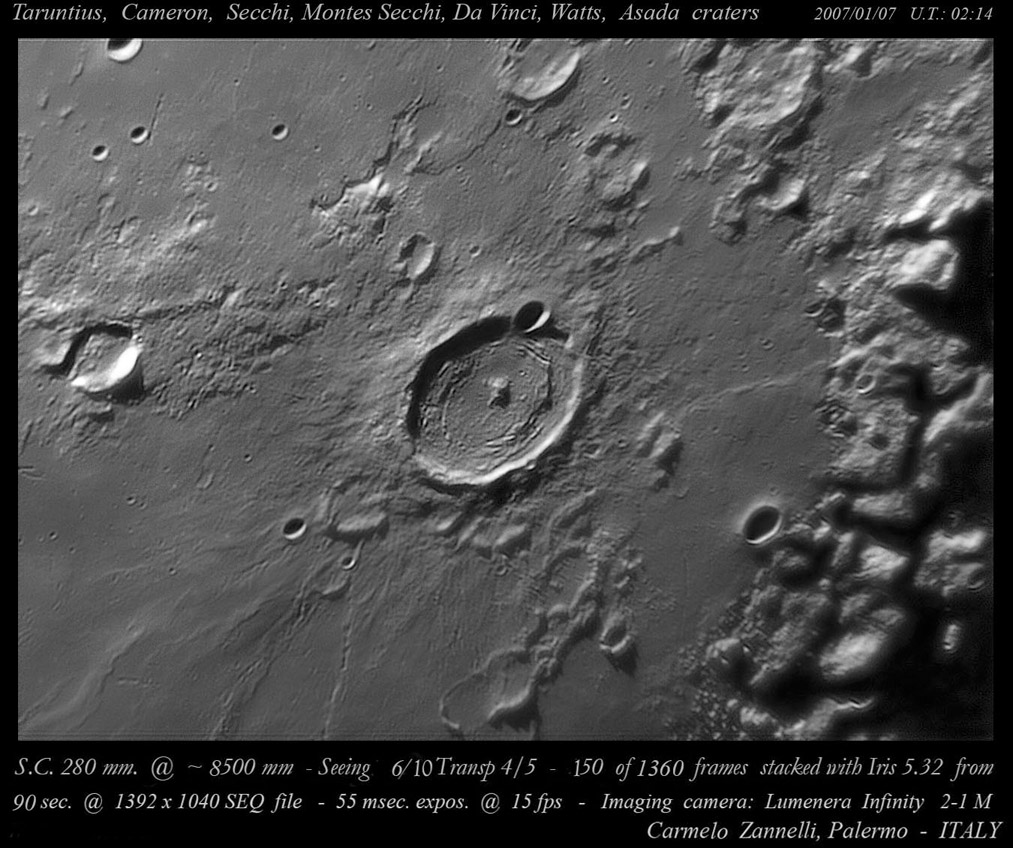June 5, 2019
Excellent Taruntius
Originally published February 21, 2010

image by Carmelo Mel Zannelli, Palermo - Italy. North to the upper right.
Taruntius is one of the youngest floor fractured craters (FFC) on the Moon. How do I know it is young? It has preserved secondary crater chains and faint rays. What does it mean to be floor-fractured? Interior is elevated and cut by rilles, commonly concentric with the rim. FFC are thought to be normal impact craters (note how typical the rest of the rim, ejecta and rays look) that were colonized by rising magma that pushed up and often cracked their floors. FFC only occur near edges of mare, not in the middle of highlands, and hence magma is available at depth to rise under them. Taruntius is one of the prime examples of a FFC because it's circular ridge and rille pattern is so complete. Taruntius' central peak may also rise above its rim. According to measurements the crater is 1.1 km deep and the peak rises as much as 1.9 km above the floor - these measurements need to be confirmed. Another interesting feature is the lava flows of Mare Tranquillitatis (upper left) that appears to have flowed as a thick sheet over older flows (similar to flows near Bohnenberger). Note near the top a small crater with a smooth floor that has been entirely surrounded by the flows. Instructive region!
Chuck Wood
Technical Details
See image border.
Note: The snowy weather finally zapped us today. Our ice-filled gutter collapsed and as it fell tore the panel off our house where the electricity comes from the utility pole into the house. Three firemen - for safety - and 4 electricians later we now have our electricity turned back on. Hence another classic LPOD, this great one from Dec 3, 2008.
Related Links
Rükl plate 37
Mel's website
Yesterday's LPOD: Night Lights
Tomorrow's LPOD: More Lights in the Sky
COMMENTS?
Register, Log in, and join in the comments.



